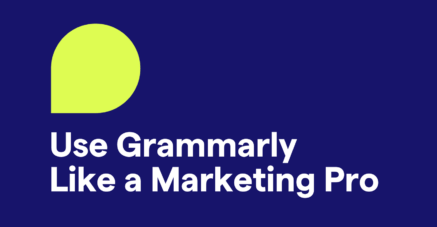Business Writing
 How to Come Up With Blog Ideas (15 Creative Ideas to Get Started)Quick takeaways: Use brainstorming techniques like mind mapping and SCAMPER to generate ideas. Tap into resources like experts,...April 15, 2025
How to Come Up With Blog Ideas (15 Creative Ideas to Get Started)Quick takeaways: Use brainstorming techniques like mind mapping and SCAMPER to generate ideas. Tap into resources like experts,...April 15, 2025 How to Use Grammarly Like a Technical Writing ProIn the fast-moving world of SaaS and IT, users rely on clear documentation to navigate complex, ever-evolving systems. My job as...April 2, 2025
How to Use Grammarly Like a Technical Writing ProIn the fast-moving world of SaaS and IT, users rely on clear documentation to navigate complex, ever-evolving systems. My job as...April 2, 2025 The Best Grammarly Prompts for IT ProfessionalsIn the high-stakes IT world, effective communication is critical. Explaining a complex network reconfiguration to executives or...February 2, 2025
The Best Grammarly Prompts for IT ProfessionalsIn the high-stakes IT world, effective communication is critical. Explaining a complex network reconfiguration to executives or...February 2, 2025 How to Use Grammarly Like a Marketing ProI work in a fast-paced environment at a marketing agency, where efficiency is critical. In other words, my productivity decides...January 21, 2025
How to Use Grammarly Like a Marketing ProI work in a fast-paced environment at a marketing agency, where efficiency is critical. In other words, my productivity decides...January 21, 2025 How to Create a Project Plan: a Step-by-Step GuideEfficiency and organization are critical in any workplace project. A project plan serves as a detailed guide that helps teams...January 17, 2025
How to Create a Project Plan: a Step-by-Step GuideEfficiency and organization are critical in any workplace project. A project plan serves as a detailed guide that helps teams...January 17, 2025 How to Create a Project Charter: A Step-by-Step GuideA project charter is a high-level document that provides an overview of a project. Typically, project charters are used as...January 16, 2025
How to Create a Project Charter: A Step-by-Step GuideA project charter is a high-level document that provides an overview of a project. Typically, project charters are used as...January 16, 2025 How to Write an Elevator PitchAn elevator pitch is a memorable, succinct summary of who you are and what you do, typically given in a professional setting....January 9, 2025
How to Write an Elevator PitchAn elevator pitch is a memorable, succinct summary of who you are and what you do, typically given in a professional setting....January 9, 2025 How to Write Great OKRsObjectives and Key Results (OKRs) are a textual framework used in business to help individuals and teams attain their goals. OKRs...January 8, 2025
How to Write Great OKRsObjectives and Key Results (OKRs) are a textual framework used in business to help individuals and teams attain their goals. OKRs...January 8, 2025 Improve Your Résumé Bullets With AIIf you’ve ever applied for a job that’s a perfect fit with your skills and experience only to receive nothing more than an...December 9, 2024
Improve Your Résumé Bullets With AIIf you’ve ever applied for a job that’s a perfect fit with your skills and experience only to receive nothing more than an...December 9, 2024 Streamlining Success: A Step-by-Step Guide to Creating Process Documentation for Your BusinessIt may not be the most glamorous business writing task, but process documentation is an important part of project management and...December 4, 2024
Streamlining Success: A Step-by-Step Guide to Creating Process Documentation for Your BusinessIt may not be the most glamorous business writing task, but process documentation is an important part of project management and...December 4, 2024